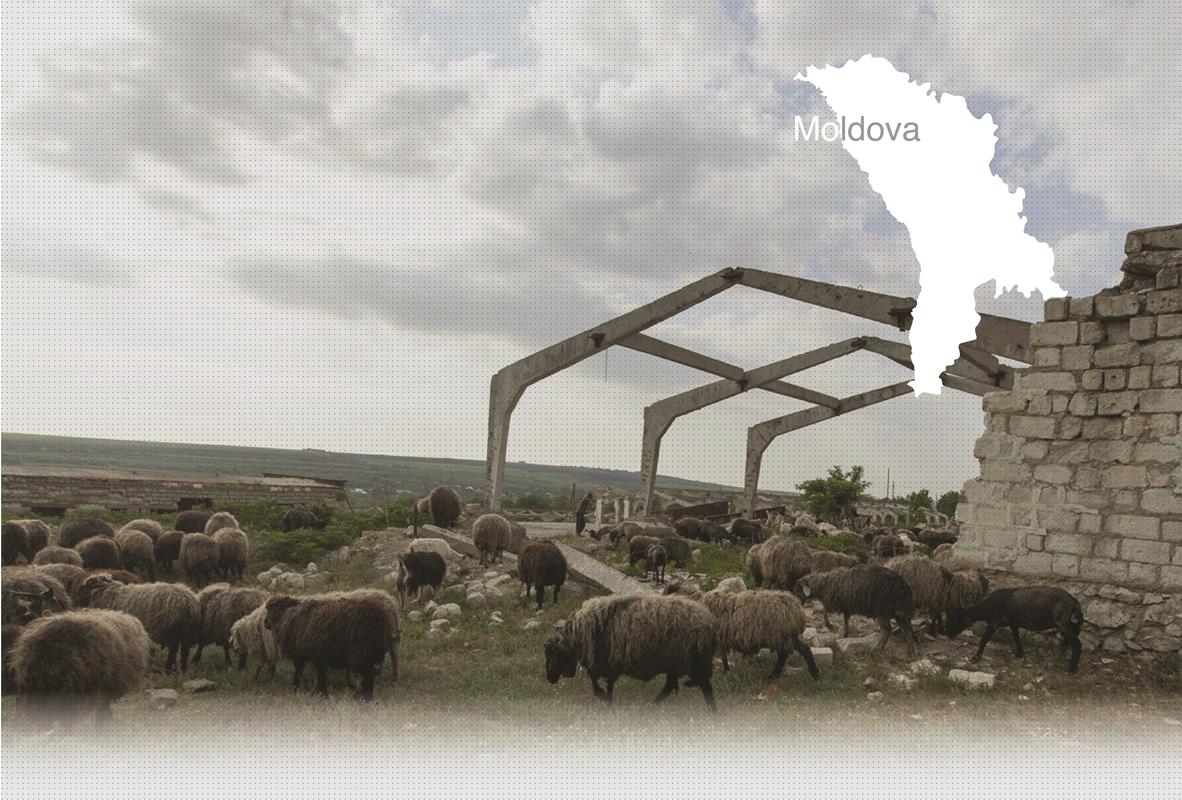

1 Killing site(s)
Alexandra S., born in 1925: “There were not a lot of Jews in Sărăteni. Many more lived in nearby Leova. When the Romanian soldiers arrived in the village in 1941, they gathered all the Jews from Sărăteni in my family’s courtyard. It was a group of more than twenty people, mainly women and children. The Romanian soldiers guarding them ordered my mother to prepare some food for the Jews. She prepared two pans of mamalyga which soldiers gave to the Jewish children. The Jews spent the night outside in the courtyard. They were crying. The soldiers took all of their belongings away and put them in our barn. In the morning, the soldiers took the Jews to the outskirts of the village. There was a ravine there, it was an old clay quarry. The Jews from Sărăteni were shot and buried there (…)” (Witness N°164Mo, interviewed in Sărăteni, on November 14, 2014)
« In July 1941, 1,558 Jewish residents were arrested in Leova and taken in the direction of Chisinau. On the way, fifty-five were shot by Romanian soldiers as weak and elderly near the village of Sărăteni. A group of twenty people were shot 500 meters north of the village of Sărăteni and the remaining thirty-five people were shot 250 meters east of the village. The shooting was carried out by thirty Romanian soldiers commanded by Lt. Colonel Muntianu.” [Act drawn up by Soviet Extraordinary Commission (ChGK): RG-22.002M: GARF 7021-96-89]
Sărăteni is a commune in Leova District, in south-western Moldova. It is composed of two villages, Sărăteni and Victoria. Before the war, mostly Moldovans, Greeks, Ukrainians, and Germans lived in Sărăteni. There were also several Jewish families, but the closest large Jewish community was in Leova, the district capital. The 1930 census counted 2,326 Jews living in Leova, the last count completed before the war. The Jewish community in Leova had at least four synagogues, two Jewish cemeteries and several mikvehs and slaughter houses. Each Thursday in Sărăteni, a huge market was organized where the Jews and non-Jews from Leova as well as from nearby villages would come to trade. YIU’s witness Luiba T., born in 1933, remembers the Jews from Sărăteni as “very intelligent and calm people”.
In July 1941, 1,558 Jewish residents were arrested in Leova and taken in the direction of Chisinau. On the way, fifty-five Jews were shot by Romanian soldiers as weak and elderly near the village of Sărăteni. A group of twenty people were shot 500 meters north of the village of Sărăteni and the remaining thirty-five people were shot 250 meters east of the village. Alexandra S., born in 1925, remembers the group of twenty Jews was gathered in her family’s courtyard. Her home was located in the center of Sărăteni village. In the group, there were men, women, and children. The Romanian soldiers guarding the Jews took their belongings from them. The next day, the group of Jews was brought to a site outside of Sărăteni village and murdered by shooting in an old clay quarry. Luiba T., born in 1933, remembers other groups of Jews that were gathered in her family’s courtyard. The first group she remembers was a group of a few dozen people, mostly women and children. They stayed in her courtyard for several days before they were taken by Romanian guards in an unknown direction. A few days later, a group of Jewish men was gathered at the same place where they spent the night. The next day, the soldiers took them away in the same unknown direction.
YIU’s team managed to locate the mass grave of twenty Jews shot in an old clay quarry. The grave remains unmarked.
Do you have additional information regarding a village that you would like to share with Yahad ?
Please contact us at contact@yahadinunum.org
or by calling Yahad – In Unum at +33 (0) 1 53 20 13 17